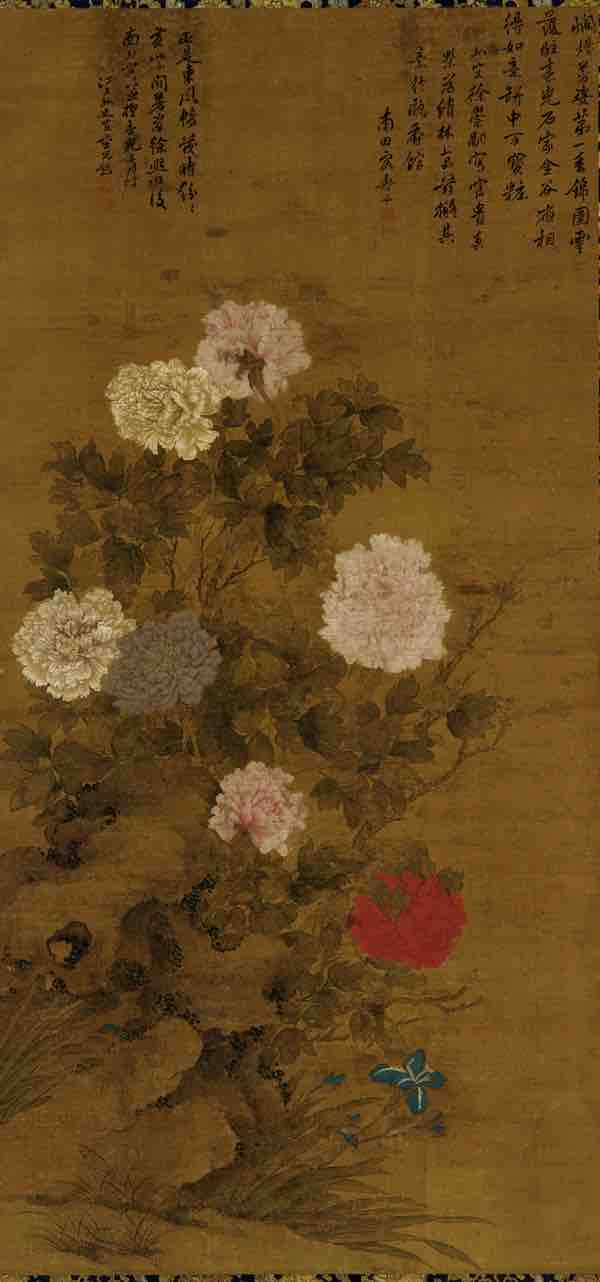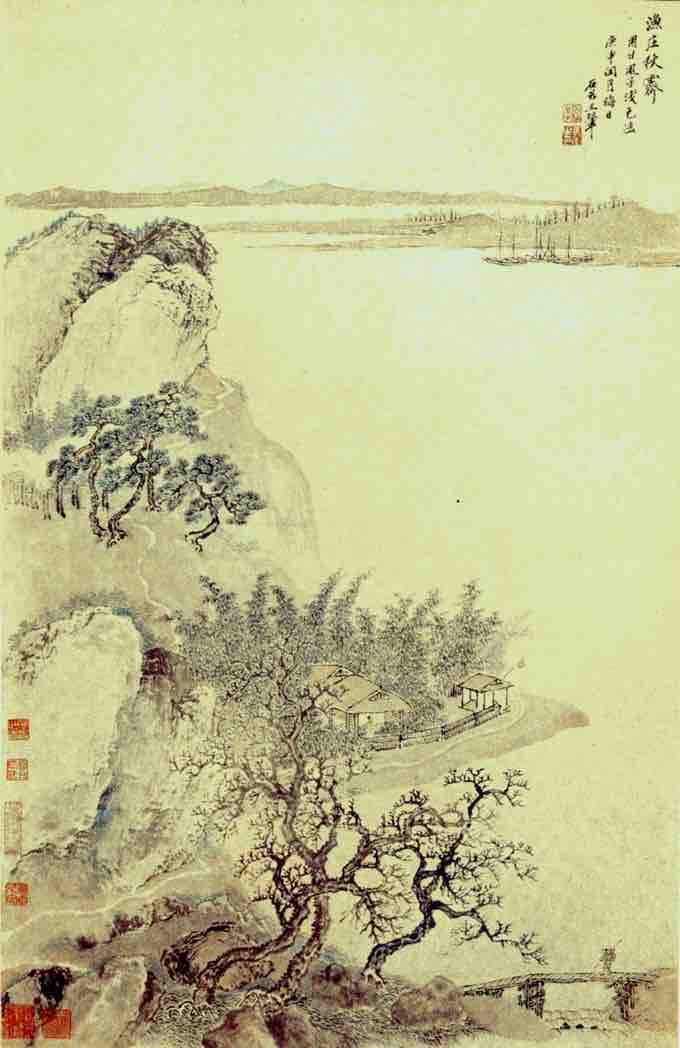Overview: Qing Dynasty Painting
The Qing Dynasty was the last imperial dynasty of China, ruling from 1644 to 1912 with a brief, abortive restoration in 1917. It was preceded by the Ming Dynasty and succeeded by the Republic of China. The Qing multi-cultural empire lasted almost three centuries and formed the territorial base for the modern Chinese state.
Under the Qing Dynasty, traditional forms of art flourished and many types of innovations were made at many levels. High levels of literacy, prosperous cities, a successful publishing industry, and the Confucian emphasis on cultivation all fed a lively and creative set of cultural fields. The early Qing dynasty developed in two main strands of painting: the Orthodox School and the Individualist painters. Both schools followed the theories of Dong Qichang, though emphasizing very different aspects.
Orthodox Painting
The Qing emperors were often skilled in painting and offered their patronage to Confucian culture. The Kangxi and Qianlong Emperors, for instance, embraced Chinese traditions both to control them and to proclaim their own legitimacy. Under the Orthodox School, court painters made new versions of the Song masterpiece, Zhang Zeduan's Along the River During the Qingming Festival, whose depiction of a prosperous and happy realm demonstrated the beneficence of the emperor. The most impressive aesthetic works during this period were done among the scholars and urban elite. Calligraphy and painting remained a central interest to both court painters and scholar-gentry who considered the Four Arts (music, strategy games, calligraphy, and painting) part of their cultural identity and social standing.
The painting of the early years of the dynasty included such painters as the orthodox Six Masters, including the Four Wangs. The 19th century saw such innovations as the Shanghai School and the Lingnan School, which used the technical skills of tradition to set the stage for modern painting.
The Six Masters
The Six Masters of the early Qing period were a group of major Chinese artists who worked in the 17th and early 18th centuries. Also known as Orthodox masters, they continued the tradition of the scholar-painter, following the injunctions of the artist-critic Dong Qichang late in the Ming Dynasty. The works of the Six Masters are generally conservative, cautious, subtle, and complex in contrast to the vigorous and vivid painting of their individualist contemporaries.

Yun Shouping, Peonies, Hanging scroll; ink and color on silk (17th-18th century)
Yun's style was vibrant and expressive; he attempted to display the inner vitality and spirit of his subjects in painting.
The Six Masters include the flower painter Yun Shouping, the landscape painter Wu Li, and the Four Wangs: Wang Shimin, Wang Jian, Wang Yuanqi, and Wang Hui. The Four Wangs were particularly renowned in the Orthodox School and sought inspiration in recreating the past styles, especially the technical skills in brushstrokes and calligraphy of ancient masters. The younger Wang Yuanqi (1642–1715) ritualized the approach of engaging with, and drawing inspiration from, the work of an ancient master. His own works were often annotated with his theories of how his paintings relate to the master's model.

Wang Hui, Clearing Autum Sky over a Fishing Vilage, hanging scroll, ink and light colors on paper (1680)
Wang Hui and the three other Wangs dominated Orthodox art in China throughout the late Ming and early Qing periods. Of the Four Wangs, Wang Hui is considered to be the best known today.